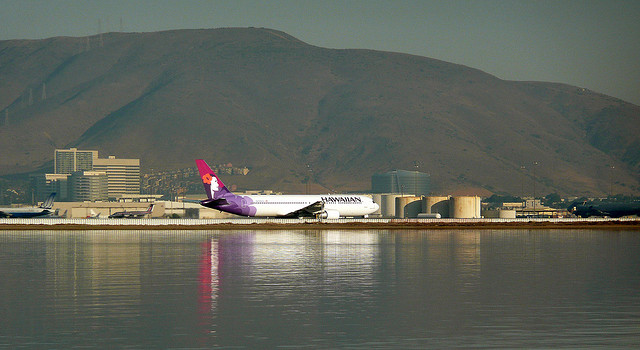New study zeroes in on sea level rise on the West Coast, finds variation based on location

By 2030, sea levels on most of California’s coast will be five inches higher than ten years ago. By 2100, three feet higher. That’s according to a new report by the National Research Council. The study arrived at numbers that aren’t far from previous projections of sea level rise, but other research has been on a global scale, and this one focused specifically on the West Coast.
“What was surprising to me was Oregon and Washington being so different,” Robert Dalrymple told me; he’s a professor of civil engineering at Johns Hopkins University and chair of the Committee on Sea Level Rise in California, Oregon, and Washington, which wrote the report.
Sea level rise happens at different rates at different places. It’s not just caused by land ice melting, though that is the primary driver. Another factor that causes sea level rise on a global scale is thermal expansion; warmer water takes up more space than cooler water.
And then there are regional and local factors. Climate patterns over the Pacific, for instance El Niño, can drive the sea level higher. And faults can make it seem higher; that’s where the differences between California and the other West Coast states come in. California, south of Cape Mendocino, is subsiding. North of Cape Mendocino and up into Oregon and Washington, the land is rising.
“Since the land is rising, it looks like the sea level is falling,” Dalrymple said. So for areas north of Cape Mendocino, sea level rise will be less drastic (at least until a major earthquake undoes all that rising). Whereas in most of California, the land is sinking while the sea rises. Storms and high tides will make it worse.
[module align=”left” width=”half” type=”aside”]Explore where the water will reach with Climate Central’s Surging Seas map.[/module]
Low-lying areas, including San Francisco International Airport could flood within a few decades. The news isn’t any better if you live near a cliff: erosion is already working away at California’s coasts. Dalrymple says without factoring in sea level rise, the shoreline would erode 10 to 30 meters in the next hundred years. “It’s bad now. It’s going to be worse in the future.”
One thought on “Sea Level Rise Will Hit Calif. Harder Than Rest of the West”
Comments are closed.

The NSA used computer models to project sea rise. Those models assumed that Antarctic ice was melting, so the results of this study is bogus. Details here:
“Overall, according to the team, their field data shows “steady state mass balance” on the eastern Antarctic coasts – ie, that no ice is being lost from the massive shelves there. The research is published in the journal Geophysical Research Letters.
This is good news indeed, as some had thought that huge amounts of ice were melting from the region, which might mean accelerated rates of sea level rise in future.”
There is no melting, thus no sea level rise.